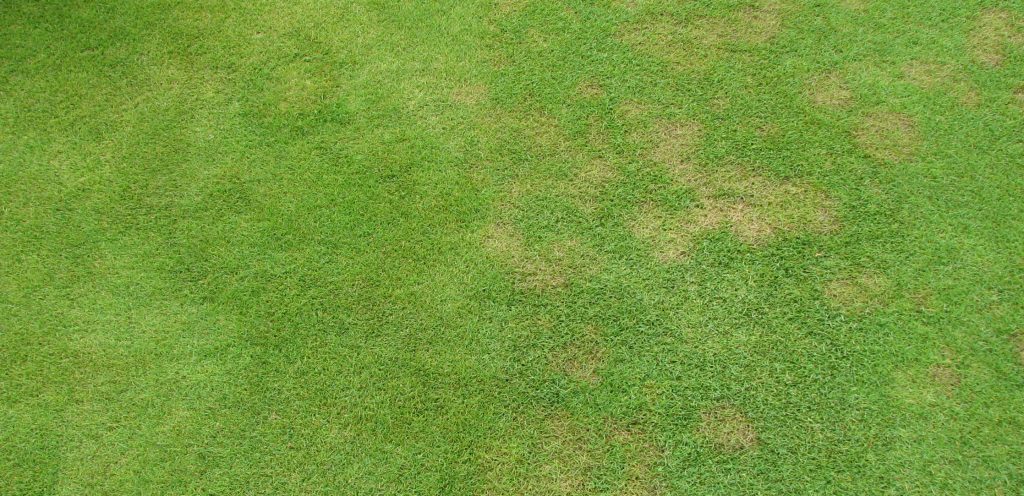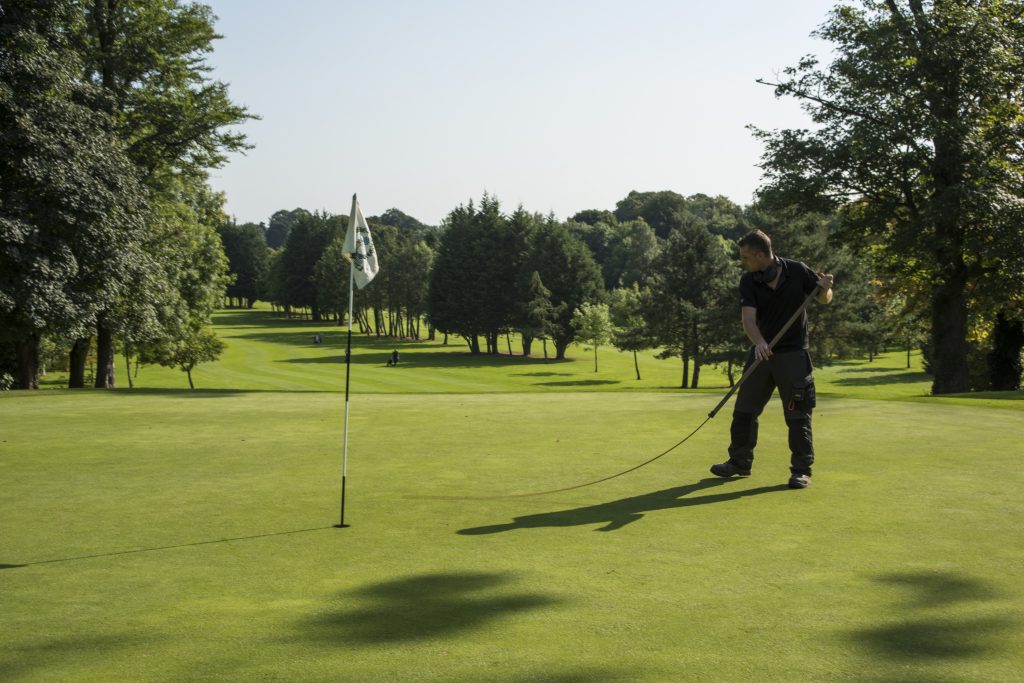Preventative overseeding: an essential disease prevention tactic
Related Articles
With the loss of key fungicides removing the safety net of using curative chemicals to control turf diseases, greenkeepers must implement a series of management strategies to provide effective control against threats such as microdochium patch.
That’s the advice from Richard Brown, Amenity Sales Manager for Germinal GB, who recommends that the future of effective disease management is reliant on frequent overseeding with resistant bentgrasses.
Microdochium patch affects many cool season turf grass species including annual meadow grass and perennial ryegrass, and especially Poa annua, and is one of the primary causes of disease scarring on golf greens. The pathogen over-summers in thatch or soil before infecting grass leaves in the autumn when cool and damp conditions prevail.

Overseeding several times a year with disease resistance cultivars such as AberRegal will help to keep greens clear of microdochium patch
“The loss of several fungicides has made the challenge of controlling microdochium patch significantly harder to achieve,” Richard Brown explains. “Despite this, the use of a few cultural and biological control measures can help greenkeepers to achieve appropriate levels of preventative disease control.”
Elementary management techniques such as daily dew removal and the prevention of excessive thatch are key practices, Brown explains: “Microdochium patch thrives in damp, protected conditions so it’s essential to keep on top of the basics in terms of regular aeration and daily switching.”
Brown continues by explaining that the battle against the disease will be won or lost depending upon a greenkeeper’s ability to increase the population of desirable grass species and to reduce the amount of disease prone Poa annua. “It therefore makes sense to overseed using disease resistant bentgrasses to create fire breaks between patches of susceptible Poa annua. A blend of varieties – such as those in Germinal’s AberMajesty and ForeFront Greens blends – is preferable to a single cultivar as this increases the sward’s genetic diversity and gives the over-seeded area a better chance of beating the disease.”
In terms of overseeding frequency, Brown advocates a policy of introducing new seed as often as possible: “In all but the most favourable years, overseeding once a year won’t be enough to out-compete Poa, so a number of applications will be required.”
Instead of relying on a single overseeding window, Mr Brown therefore advises greenkeepers to introduce new seed a minimum of two times per year, but where possible to overseed three or four times. “This might seem excessive, but it needn’t put pressure on the groundcare budget as the additional overseeding spend will be offset by reduced fungicide costs.”
Whilst the method with which new seed is introduced is relatively inconsequential, Brown warns that the timing of overseeding should be given careful consideration: “Whilst overseeding during the traditional late summer window ensures good germination, it has drawbacks when it comes to tackling microdochium patch as this timing can produce high levels of seedling mortality due to low cut heights. In addition, the soft cell walls of the seedlings that do survive makes these young plants more susceptible to attack from fungal spores just at the time when the threat of infection is at its highest.

Elementary turf management techniques such as daily switching to remove dew are essential to keeping microdochium under control and should be carried out in parallel with preventative overseeding
“In contrast, older plants are better able to resist the disease thanks to higher levels of cell wall lignin. Overseeding in the spring therefore gives greens a better chance of withstanding the disease as the sward will be populated by older, more resilient plants when disease pressure rises in the autumn.
“Similarly, cold-seeding (overseeding in late autumn or early spring to enable seeds to germinate as soon as temperatures rise) is also worthy of consideration as this allows seedlings to establish even earlier, enabling the sward to get even further ahead of the disease.”
Modern bentgrasses such AberRegal, AberRoyal and 007 DSB are also favourable as their ability to tolerate a low input regime enables the sward to be managed in a manner which is less favourable for the disease’s survival. “As well as their inbuilt genetic resistance, these cultivars are also resilient against microdochium patch thanks to their ability to thrive in drier, less nutrient-rich conditions,” Brown adds. “Varieties such as Musket, which gets away quicker in the spring and is therefore able to repair early season disease scarring, should also be considered as a means of transforming the genetic make-up of greens and reducing reliance on the use of curative chemicals.”
For more information, visit germinalamenity.com

























